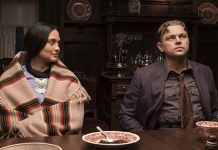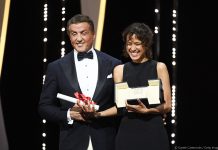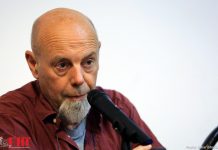Variety spoke with Kiyoshi Kurosawa the day after the world premiere of his World War II suspense drama “Wife of a Spy” in competition at the Venice Film Festival. A frequent invitee to Venice, Cannes and other major festivals, Kurosawa did the interview via Zoom from the Tokyo office of his Japanese distributor. “This is the first time I haven’t been able to go to a big festival like that,” says Kurosawa. “I would have liked the three main cast members see the film with the audience. It’s really regrettable that they couldn’t go.”
“Wife of a Spy” may be your first-ever period film, but certain scenes are as disturbing as anything in the horror films that first made your name internationally. Is that one reason why you were attracted to the material?
Yes, I wanted to make the scary parts scary, but this film was not my idea from the start. Two of my former students – Ryusuke Hamaguchi and Tadashi Nohara – wrote the script. Their original story was really interesting with the suspense and the melodrama both well done. I just added a bit of scariness. (laughs)
Specifically, I rewrote the sections with the military policemen played by Masahiro Higashide to make him scarier. Also, their script was extremely long, so I cut a lot of the dialogue. The finished script is about 20% mine and 80% theirs.
You shot the film before the pandemic, but Higashide’s military policeman is something like the coronavirus – lurking in the background, but with the power to upend lives in an instant. He and his comrades give the film an atmosphere of anxiety that feels somehow contemporary.
That’s true, but I wasn’t thinking about (the pandemic) while I was shooting, so that’s a total coincidence. Japan in the first half of the 1940s was under military rule and everyone was anxious in their hearts. I tried to convey that feeling of extreme unease.
That feeling is also present in some classic Japanese films made during and after the war. Did you give your cast advice about what to watch to better understand the period?
No, I gave them hardly any advice at all. In the script there are three main characters – the married couple played by Yu Aoi and Issey Takahashi and the military policeman played by Masahiro Higashide. A lot of their lines are not anything you would say in a modern movie. But all three of them understood the intent of those lines, what they were aiming for. That was because they all had a good basic education in old Japanese movies. So I didn’t have to tell them to see this or that.
You shot the film on 8K for public broadcaster NHK’s 8K service. That must have been a challenge, especially since you were filming a historical drama. If you make a mistake – say an incorrect costume – it’s really going to stand out.
NHK’s technical staff took a lot of pains to make everything look clear and fine grained, but like a moving painting, not raw reality. If you’re doing a live sports broadcast that (realism) is a strength, but if you’re trying to make a fiction film, especially one set in the past, 8K can look too raw if you just shoot with it as is. The actors don’t look like people who are living in the film’s period; they look like actors performing. But the NHK technical staff really toned down that rawness.
Still, there must have been a lot of pressure on the set to get things right, and not just visually.
Everyone was feeling pressure, that’s true, but my job was to ease that pressure. Even if something looked a bit strange, I’d say “That’s all right,” since I could fix it in post. When everyone was getting too tense I’d tell them to relax so they could do their jobs a little more easily.
























